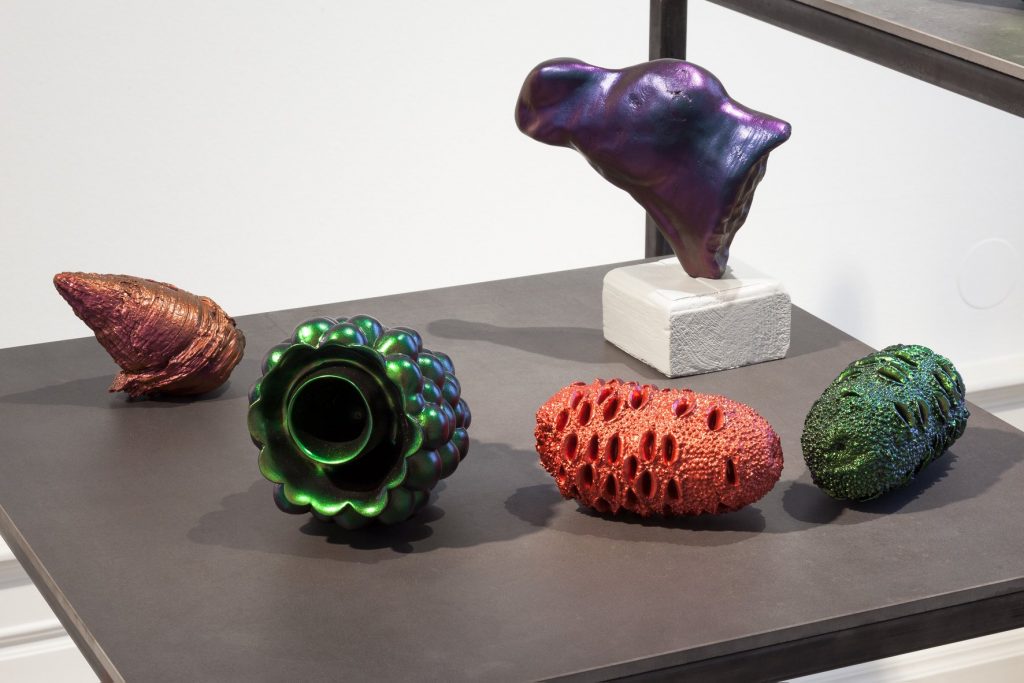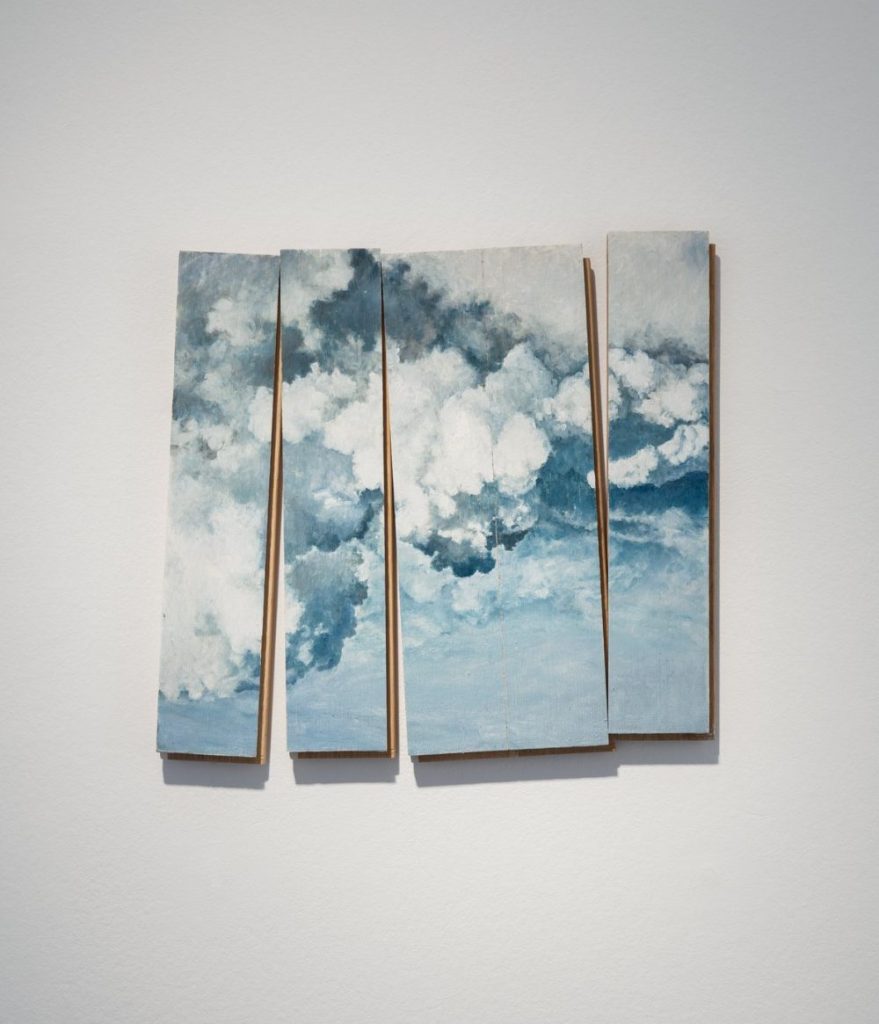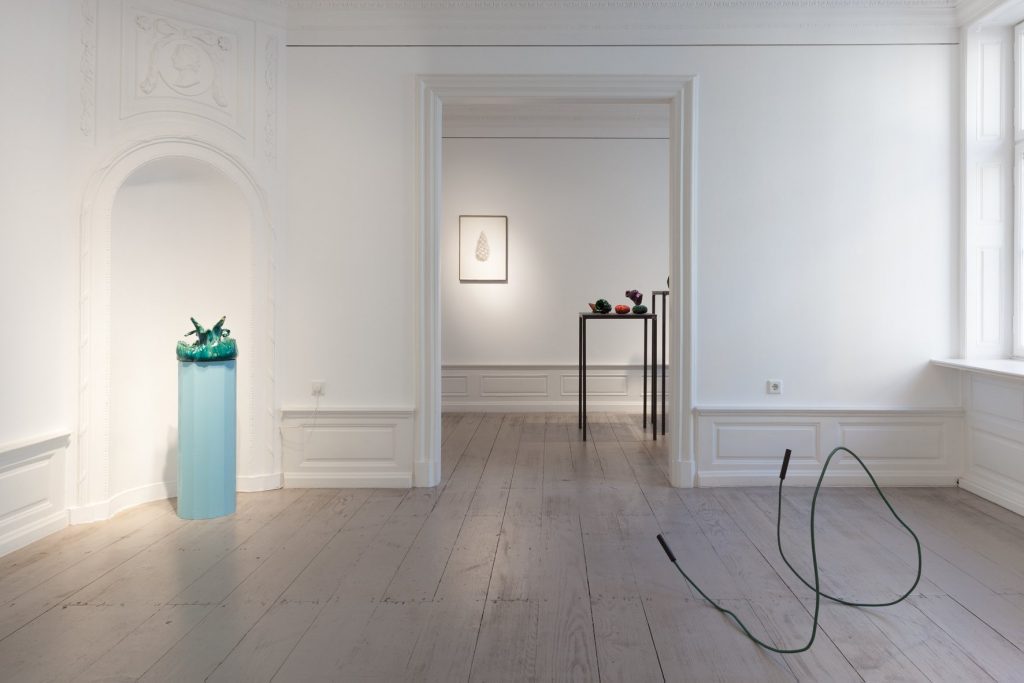The artistic practice of Mateusz Choróbski (b. 1987) is based on shifting and redefining the content of architectural or everyday found objects. Thus, melted insulating glass from old thermos bottles shimmers as an exposed amber interior. The formerly hidden emerges, and the inorganic now appears warm, organic, and surprisingly familiar. In addition to visibility, the glare of an industrial lamp imposes physical constraints. The physically depicted heat and cold transfer of a radiator converted into a refrigerator minimizes the distance between material and immaterial properties. A simultaneous “being” and “non-being” is manifested representationally. A constant, tangible transition. Whereas Choróbski’s shifts are linear, the poetic language of Marzena Nowak (b. 1977) opens a temporal access and takes us on a journey into her childhood in a Poland of the past. A childhood that was “experienced” as a common denominator by each of us, and yet was different in each place. Although, as works of art, the objects have now been stripped of their function, both individual and collective memory recalls their emotional connotation. The emotions that the works exude, however, remain volatile. A mélange of sentimentality and sadness. This time has passed and will never come again; bittersweetly, the artist makes us realize how transient everything is, how fast-moving and earthly. A potpourri of forgotten places and materialities. What stories can the carpets of our childhood homes tell? The clouds above our heads? Being a child once again and enjoying the lightheartedness or experiencing the world in the shoes of others. While Nowak’s works evoke a feeling of nostalgia, the sculptures by Katja Tönnissen (b. 1982), with their explosion of color and form, only initially radiate pure and simple joy. The unabashed execution and implied unfinishedness, however, also testify to an allusion of what is subliminally thematized. Fleshy water fountains, sketchy flamingos, cheerfully apocalyptic and reductively kitschy scenarios, as in the installation Birds…, oscillate between simplicity and subtlety, lightness and trickiness. In contrast, the objects by Thomas Musehold (b. 1982) seem like a cabinet of curiosities. A Wunderkammer of tracked down, found, and captured rarities. Whether a real form served as a model for his resin and 3D works or whether there is something actually discoverable under the varnish remains hidden. In fact, it has been dismantled, reconstructed, and reshaped. In the end, it is presented majestically, commanding respect on tables designed by Musehold.













